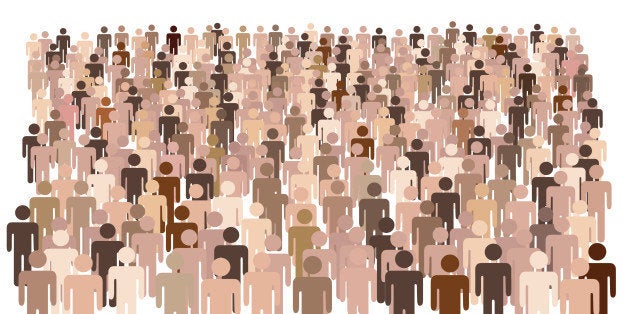
(Excerpt) Back in the 1970's the Baby Boom generation changed the way babies are born in the U.S. by demanding a more natural approach to pregnancy, childbirth, and postnatal care. This momentous transformation came about through a "perfect storm" of forces that converged over several decades to result in maternity care that was more humane, less medicalized, and more family-centered, according to the book Family Centered Maternity Care by Celeste R. Phillips.
Today a similar "perfect storm" seems to be brewing as Baby Boomers approach the later years of their lives and face aging and dying in a society that is fearful and avoidant of these realities. Like childbirth in the 1930's, dying in current times is viewed as a "pathological process" that requires medical intervention and control.
Even though some experts say the natural childbirth movement has taken a few steps backward in recent times, there is much to be learned from the evolution of family-centered maternity care in our society. Those of us who long for a similar breakthrough in the end-of-life movement would be wise to study this history and the "lessons learned" from decades of struggle for a humane, respectful and dignified approach to the special event of birth.
3 Key Factors of the "Perfect Storm"
In a review of the milestone events of the natural childbirth crusade as presented by Phillips in her book, three key factors stand out that can also be seen in the end-of-life movement:
1. Medical Pioneers
Pioneers such as Drs. Ferdinand Lamaze and Robert Bradley in the natural childbirth movement and Dr. Elizabeth Kubler-Ross, Dame Cicely Saunders, Drs. Ira Byock and Atul Gawande in the end-of-life movement, have braved the criticism of their peers in medicine to campaign for changes in long-held beliefs and practices. Both the natural childbirth and end-of-life movements have benefitted from the presence of courageous visionaries within the halls of conventional medicine who have dared to challenge the status quo with revolutionary new ideas.
2. Grassroots Movements
Phillips writes that a number of grassroots movements began to spring up in the 1950's through the -70's that empowered women to make their own choices for their bodies, their lives and their families.
The end-of-life movement is currently experiencing an upsurge in grassroots movements such as the National Home Funeral Alliance and the Green Burial Council, among many others. Individuals are being empowered to prepare for the end-of-life by creating advance directives for their healthcare and to demand the type of care they want to receive. The transformation that occurred in childbirth in past decades informs us that similar change can happen in the end-of-life arena if the current grassroots movements continue to gain momentum.
3. Media Attention
According to Phillips, the natural childbirth movement was also advanced with the help of articles in popular magazines and the release of the book Our Bodies, Ourselves.
Today death and dying are "trendy" and the media is responding with increasing coverage of these subjects. In addition, Dr. Atul Gawande's book Being Mortal is serving to educate and empower individuals to make choices for their own death and dying. Such media attention is crucial for the growth of any cause or campaign and will likely contribute to even more growth in the grassroots organizations mentioned above.
"Take-home" Messages
The currently burgeoning end-of-life movement can learn a great deal by studying the history of the natural childbirth movement. The most important points to remember from this comparison include:
1. Have a unified message for the cause
It is important to rise above the fragmentation that currently exists within the end-of-life movement and to identify the "big message" that ultimately drives the demand for change: we need to approach death and dying differently in our society. Creating a slogan or catch phrase that can be supported by all factions of the end-of-life movement would be helpful to make the end-of-life a cause that everyone can support.
2. Educate, educate, educate.
Our society currently suffers from a great deal of ignorance and misinformation about death and dying. We need a concerted effort to educate the masses about all aspects of the end-of-life and to open up conversations about options that are available when people are prepared. We also need to create campaigns that can reach people of all ages.
3. Create a coalition
In emulation of the natural childbirth movement we would be wise to gather together the concerned lay public along with professionals from all areas of the end-of-life and form a coalition for change. By combining efforts, knowledge, resources, energy, and sheer willpower, we will increase the strength and sustainability of the cause for improved end-of-life care.
To successfully improve death and dying in our society we will need determination, perseverance, courage, and ongoing inspiration. Each of us must contribute our energy and passion to this cause to the best of our ability in order to ensure a better end-of-life for ourselves and our loved ones.
In our search for humanity, respect and dignity at the end-of-life, death is indeed the "new" birth.
Imagine this: One day, in the not-too-distant future, individuals will be empowered to make choices for their own end-of-life process and will fully recognize that dying can be a time of growth, transformation and beauty. This is a cause truly worth fighting for!
If you feel inspired to become part of the "Coalition of the Informed" please join End-of-Life University as we strive to educate and inspire the masses about living and dying with awareness and awe. (To read or print the complete article click here.)
About the Author: Dr. Karen Wyatt is a hospice and family physician and the author of the award-winning book "What Really Matters: 7 Lessons for Living from the Stories of the Dying." She is a frequent keynote speaker and radio show guest whose profound teachings have helped many find their way through the difficult times of life. Learn more about her work at karenwyattmd.com.